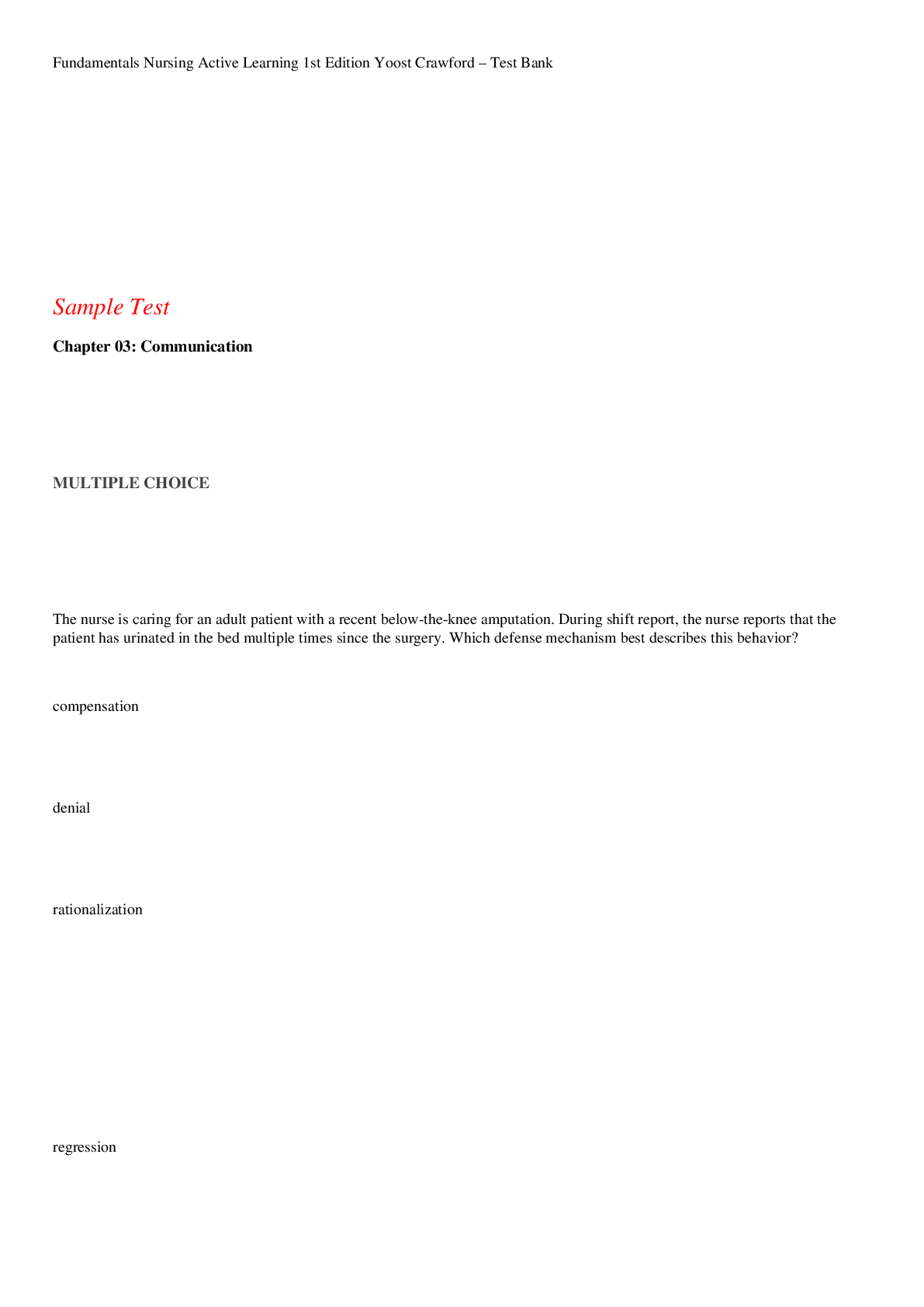Fundamentals Nursing Active Learning 1st Edition Yoost Crawford – Test Bank
Course
Project Management
Subject
Chemistry
Category
Questions and Answers
Pages
37
Uploaded By
ATIPROS
Preview 1 out of 37 Pages

Download all 37 pages for $ 12.00
Reviews (0)
$12.00
